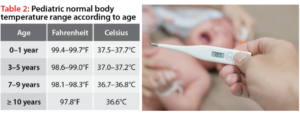For the past month, we have focused on the science of why our brains forget and some of the remedies on how to minimize it. For the following month, we will start to focus on how heatstroke can affect our babies and young children. Firstly, it is important to know that babies and children are more susceptible to high temperatures in general than adults. Normal temperature ranges for babies and infants are around 97.5 ̊ F (36.4 ̊ C), but if not monitored, hyperthermia begins at a temperature of 100.4 ̊ F (38 ̊ C). Below lists the reasons why babies and young infants are more susceptible to higher temperatures as the following information is taken from the source listed below.
- Heat production – Children produce more metabolic heat per kilogram of body
weight because they have a higher basal (relating to) metabolic rate than adults. - Body surface area – Younger children have a higher surface area to mass ratio, resulting in a greater rate of heat absorption in hot environments. However, body composition (especially an increase in body fat) and lack of fitness are likely more important contributors to susceptibility to heat illness in older children and adolescents.
- Blood circulation – Children have a smaller absolute blood volume, which limits the potential of blood-borne heat transfer from the body core to the body surface, where this heat can be dissipated. In addition, children have a lower cardiac output at a given metabolic rate than adults, further limiting heat dissipation during exercise.
- Sweat production – Children have a lower rate of sweating than adults as a result of a lower sweat rate per gland and begin sweating at a higher body temperature.
- Fluid replenishment – If not appropriately supervised, children are more likely to inadequately replenish fluid losses during prolonged exercise.
- Acclimatization – Physiologic changes that result in increased heat tolerance include increased rate of sweating, a lower temperature threshold for sweating, reduced electrolyte losses in sweat, lower heart rate, increased aldosterone production (result in high blood pressure and blood volume; lowering blood levels of potassium) with decreased urinary sodium, and lower core and skin temperatures. Children achieve these adaptations to a hot environment more slowly than adults and typically require 10 to 14 days to achieve adequate acclimatization.
Knowing the facts above, we need to ensure that we carefully monitor our littles ones so that they do not suffer from hyperthermia (overheating). We, as parents cannot take our eyes off our babies for one second, as sometimes, it could be too late.
Sources of information:
- https://www.uptodate.com/contents/heat-stroke-in-children.
- https://bagintheback.org/what-is-vehicular-heatstroke-and-causes/.
Source of pictures:


